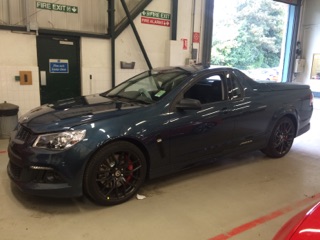Sounds much nicer with a bit of intake roar now. Some may note the crusty MAF hiding out there. I was hoping this model had the newer LS7 blade maf. But its still the old 2005 85mm LS2 type maf. Of course it must eventually die. But I'm going to use the MAF to give me a bit of info first.
 |
| Rotofab installed |
 |
| E38 VE Polynomial factors |
All the UK tuner tunes I have seen have been guilty of this at least historically anyway. I suspect some of this is driven by the fact that people think they can get a good tune in 1hr for £250! Ask GM how long it takes them to build a tune for a new application. Im certain its months.
Anyway there is a very good forum post on EFILive regarding the engine torque tables which are crucial in managing communications with the TCM.
See here https://forum.efilive.com/showthread.php?18710-Improving-shifts-via-the-ECM
 |
| E38 Torque Model Tables |
The plan is to visit Mr Wright at Surrey Rolling Road after most mods to get a good view of things. But rather than relying on a trip there every week to guage progress its possible to use EFILive logging to get information which is just as good depending on how accurate airflow models are. (Hence the discussion above about keeping the MAF in place until the Speed Density airflows match the data from the MAF).
So what data can we use? Well basically we can use measured and calculated grams of air per cylinder for a torque proxy and grams of air per second for a bhp proxy.
We can also use calculated torque values from the MAF and/or Speed Density (The topic of the torque table above) This is the main reason to keep the MAF for now. So I can get good torque calculations. Once Speed Density is giving me similar/same values I will retire the MAF.
As a plus EFILive Scan Tool allows me to export the data to CSV and therefore Excel or Access. This should allow me to do conditional evaluations of the data and tell me what spark timing at what RPM and load point gives the best calculated torque value. I was going to do the same thing but with g/cyl to proxy torque, but Jessie Bubb said he uses calculated torque while we were chatting at PRI this year. (He mentioned he even has some sort of Calc PID, Ill try and pry it off him to see how its supposed to work)
So anyway, what does one of these CSV files look like in chart form? Ok this is from the first Dyno day at SRR.
 |
| Log generated Dyno Graph (fwhp) |
So that basically is how I will be monitoring and tracking changes of modifications and ensuring spark timing is optimal. If these values increase, power should also increase by the same amount. So I can look at percentage gains to get the relative merits of each change. First up will be to log the Rotofab intake and see what that achieved. Hopefully that will be the next topic in this Blog.





